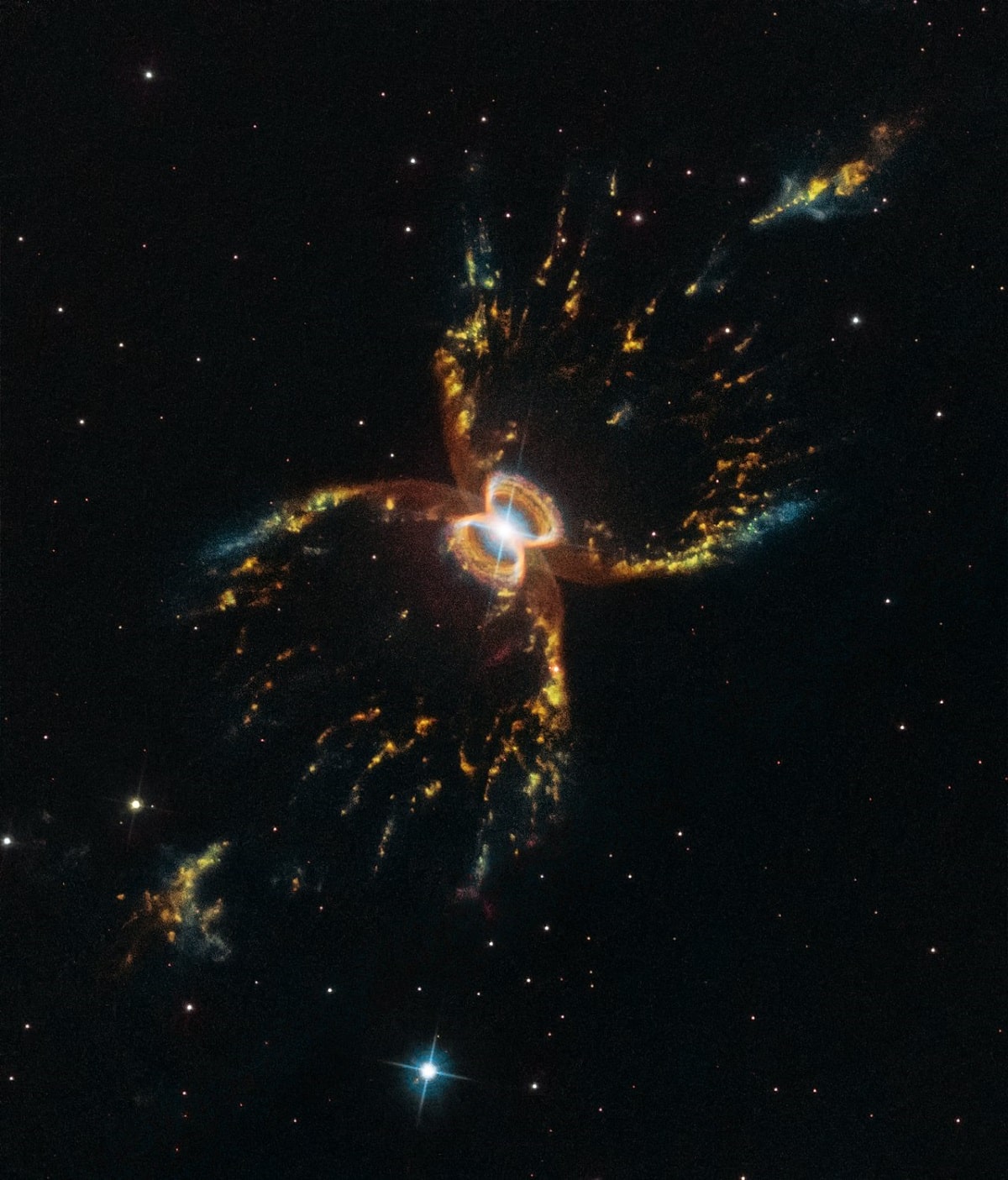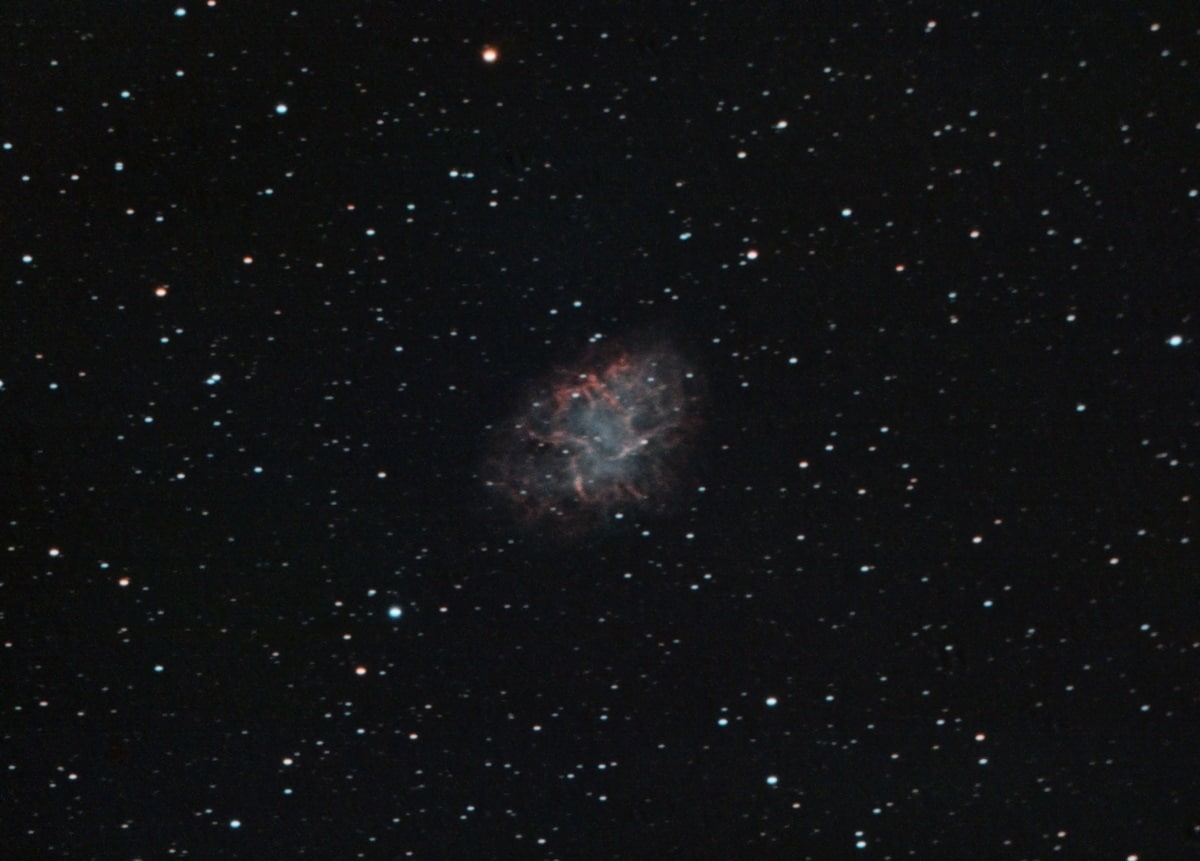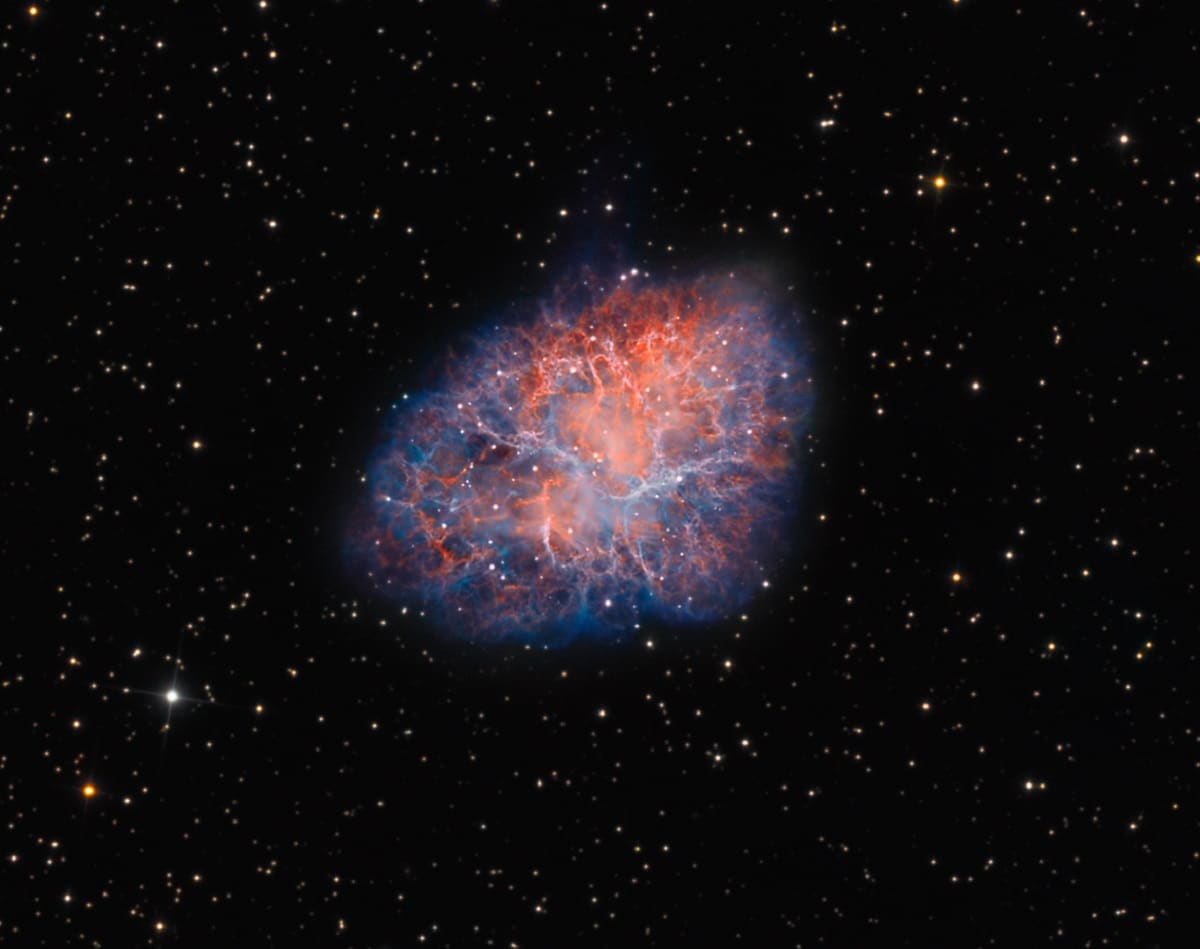
La Crab Nebula, the remnant of a supernova explosion, is one of the most studied and observed space objects, since it represents a very useful source of radiation for the study of the different celestial bodies that exist in outer space. To mention the Crab Nebula, it is important to know what a nebula is. This type of structure is a giant cloud of dust and gas found in space. Some nebulae come from gas and dust expelled by dying stars in explosions like supernovae. Other nebulae are regions where new stars begin to form.
In this article we are going to tell you everything you need to know about the Crab Nebula, its characteristics and origin.
What is the Crab Nebula, history and origin

The nebula is composed mainly of hydrogen and helium. The dust and gas in the nebula are widely distributed, but gravity can slowly begin to hold the dust and gas together. As these clumps get larger, so does their gravitational pull.
The nebula was first observed in 1731 by the Englishman John Bevis, who is credited with having discovered it, despite the fact that it had been seen and recorded by Chinese and Arab astrologers, who said that it is visible as a star, observed during the day. and can be seen day and night for 22 consecutive months.
William Parsons, 1840rd Earl of Rosse, observed it in 900 and named it the Crab Nebula because when he drew the nebula it looked like a crab. At the beginning of the XNUMXth century, several images of the nebula showed that it was expanding and determined that it formed about XNUMX years ago. The analysis of historical documents proves that the supernova that created the Crab Nebula occurred in April or early May of 1054 AD, reaching its maximum brightness in July, brighter at night than any other celestial body except the Moon.
Given its great distance and ephemeral nature, the "new star" observed by the Chinese and Arabs could only have been a supernova, a massive exploding star that, once its energy source has been exhausted through nuclear fusion, collapses in on itself. same.
Key features

The main characteristics of the nebula are the following:
- It is a luminous substance composed of gas and dust.
- It is elliptical, about 6 arc minutes long and 4 arc minutes wide.
- It has a density of approximately 1.300 particles per cubic centimeter.
- The filaments that form it are remnants of the parent star's atmosphere, composed of helium and ionized hydrogen, carbon, oxygen, nitrogen, iron, neon, and sulfur.
- It expands at a speed of 1.800 kilometers per second.
- The temperature of the filaments that compose it is between 11.000 and 18.000 K.
- It has a fuzzy blue area in its center.
- It is a polyion nebula, which means it gets its energy from the pulsar's rotation, rather than matter spewed into the interstellar medium during the supernova explosion.
- Two stars can be seen in the center of the nebula, one of which is believed to be responsible for the nebula.
- It has a radius of about 6 light years.
- It is also known as the M1, NGC 1952, Taurus A, and Taurus X-1.
Where is the Crab Nebula?
The Crab Nebula is located in the constellation Taurus. which means that it is located about 6.500 light years from Earth. Among the known objects in this nebula, we know that the core of a star died so violently that it became a pulsar. Pulsars are rapidly spinning neutron stars. Its mass is very similar to that of the Sun, except that it has a radius of a few kilometers.
The Crab pulsar spins on its axis at a staggering 30 revolutions per second and also has a magnetic field of 100 million Teslas. Having a very strong magnetosphere, it is capable of turning objects into emitters of electromagnetic radiation, due to the rotation of the star on its axis, short periodic pulses are visible from our planet, and this is the reason for this, this occurred Name.
How to observe it

It is important to know that many observations made in this nebula show that the Crab pulsar has a very complex magnetic field and, like other nebulae, it has four magnetic poles instead of two. It is also thought that the main radio bursts are emitted by a cloud of plasma located on the surface of the star.
It is widely used by astronomers to calibrate X-rays. and flux densities because it provides a strong enough signal to check the synchronization of the X-ray detectors.
At the center of the Crab Nebula is the stellar core that exploded and created the nebula, a rapidly rotating object. Perhaps one of the most amazing things ever observed is that a neutron star emits a flash of terrestrial radio waves every time it rotates, like a lighthouse at sea, 30 times per second.
Among the known objects in this nebula, we know that the core of a star died so violently that it became a pulsar. Pulsars are rapidly spinning neutron stars. Its mass is very similar to that of the Sun, except that it has a radius of a few kilometers. It also has a magnetic field of 100 million tesla. Having a very strong magnetosphere, it is capable of turning objects into emitters of electromagnetic radiation, due to the rotation of the star on its axis, short periodic pulses are visible from our planet, and this is the reason for this, this occurred Name.
As you can see, the study of nebulae was also done in ancient times when technology was still just developing. The desire of the human being to discover the ins and outs of the universe has made it easy for us to see these types of nebulae today.
I hope that with this information you can learn more about the Crab Nebula and its characteristics.